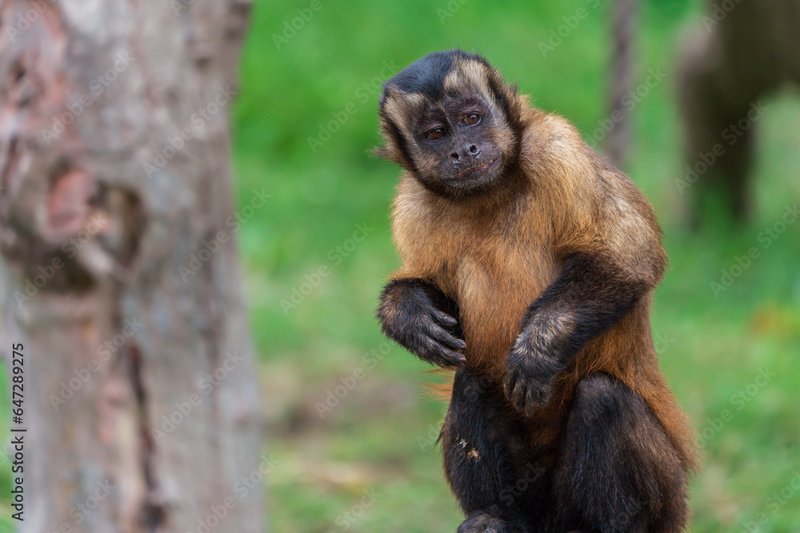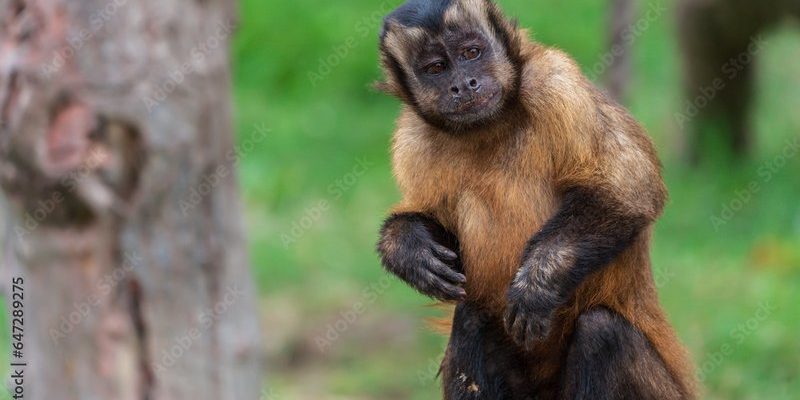
So, why exactly should we care about the smarts of these little monkeys? Understanding their cognitive abilities gives us insights into their behavior, social structures, and even how they interact with their environments. It’s like a peek behind the curtain of their world, revealing the sophisticated thought processes at play. So, let’s dive into the minds of tufted capuchins and explore just how clever they really are!
Understanding Tufted Capuchins
To appreciate their intelligence, it’s essential to know a bit about tufted capuchins. These monkeys are native to Central and South America and are easily recognized by their striking tufts of hair on their heads. They thrive in diverse habitats, from rainforests to savannas, showcasing an impressive adaptability that hints at their mental prowess.
Their diet mainly consists of fruits, seeds, and insects, but tufted capuchins are opportunistic feeders. This means they’re not picky eaters; if they find something new and tasty, they’re quick to try it. This adaptability is key in the wild and reflects their ability to learn from their surroundings. Their resourcefulness is a big part of what makes tufted capuchins so remarkable.
Their social structure is another vital aspect of their intelligence. Living in groups helps them strategize and cooperate. Much like a well-organized team at work, they rely on one another to find food and protect themselves from predators. This social dynamic also allows them to learn from each other, picking up skills and tricks that enhance their survival.
Cognitive Skills of Tufted Capuchins
You might be wondering, what specific cognitive skills do tufted capuchins possess? Well, they show impressive problem-solving abilities and a talent for using tools. In various studies, these monkeys have been observed using sticks to extract insects from tree bark. It’s like they’ve got their little Swiss Army knife, using whatever’s handy to get the job done!
In their natural habitat, tool use isn’t just a party trick; it’s a survival skill. When faced with challenges, tufted capuchins can figure out how to manipulate their environment. Whether it’s accessing food or avoiding danger, their ability to think through a problem is pretty astounding. This skill is often tested in captivity and reveals how logical and adaptable these monkeys truly are.
Another fascinating trait is their memory. Tufted capuchins have shown they can remember specific tasks and locations for extended periods. Imagine trying to recall where you hid your favorite snack weeks ago—pretty tough, right? But these monkeys can do just that, which helps them navigate their territories and remember which trees yield the best fruit.
Social Intelligence and Communication
Tufted capuchins are not just smart individuals; they’re also clever social creatures. They use various vocalizations and body language to communicate, which showcases their understanding of social dynamics within the group. For instance, they might use specific calls to warn others about predators or to signal when food is nearby.
Their social interactions are complex and often involve cooperative behaviors. This means they work together in finding food and protecting their young. Imagine friends working as a team to solve a puzzle—it’s all about collaboration. By observing one another and adapting their behavior, tufted capuchins enhance their chances of survival, demonstrating a unique level of social intelligence.
Interestingly, research indicates that tufted capuchins can exhibit emotions like empathy. They’ve been seen comforting distressed group members, showing they understand and respond to others’ feelings. This emotional intelligence is a significant indicator of their cognitive complexity and suggests that social relationships matter deeply to them.
Learning and Adaptation
Learning is a crucial aspect of tufted capuchins’ intelligence. They are highly capable of social learning, meaning they can learn behaviors by watching others. This helps them pick up new skills quickly, like how to open a tough nut or avoid a dangerous area.
In many ways, this mirrors how humans learn from each other. Think about how children often learn by observing their parents or peers. Similarly, tufted capuchins actively watch and imitate their companions, speeding up their learning process significantly. This adaptability is essential for their survival because, in a constantly changing environment, being able to learn new tricks can make a big difference.
Moreover, studies show that tufted capuchins adapt their eating habits based on the experiences of others. If one monkey discovers a new food source, it doesn’t take long for the whole group to change their behavior. This kind of behavioral flexibility is indicative of a species that can not only survive but thrive in various conditions.
Tool Use and Problem Solving
As mentioned earlier, tool use is one of the standout features of tufted capuchins. They don’t just use tools randomly; they often demonstrate an understanding of how and when to use them effectively. For example, when faced with hard-shell fruits, they might select a stone that works best for cracking them open. It’s as if they’re picking the right tool for the job, much like a handyman choosing between a hammer and a screwdriver.
This level of problem-solving ability is impressive. Researchers have set up tasks where tufted capuchins need to use multiple steps to reach a reward, and these monkeys often figure it out quite quickly. This indicates not just trial-and-error learning but a more profound level of insight. It’s like putting together a puzzle—understanding how the pieces fit together leads to the final picture.
Understanding the context of their environment also plays a role in their ingenuity. Tufted capuchins can adjust their strategies based on the situation, showing flexibility in their thought processes. It’s a reminder of how adaptable and clever these little creatures can be.
Why Tufted Capuchins Matter
So, why does all this matter? Studying the intelligence of tufted capuchins can teach us about evolution, behavior, and the importance of preservation. Their cognitive abilities are a reflection of their environment, showcasing how species adapt over time to survive.
In addition, understanding their intelligence can help us in conservation efforts. As their habitats shrink due to human activity, we need to consider how we protect not just the monkeys but the ecosystems that allow them to thrive. The more we know about tufted capuchins, the better we can advocate for their preservation and that of other intelligent species.
Moreover, learning about their behavior can help improve animal welfare in captivity. Zoos and sanctuaries can use this knowledge to create environments that stimulate their minds and cater to their social needs. By acknowledging their intelligence, we can provide better care and management, ensuring their happiness and well-being.
When you take the time to explore the intelligence of tufted capuchins, you unveil a world of remarkable cognitive abilities and behaviors. Their tool use, social skills, and adaptability reveal they’re not just cute; they’re incredibly smart creatures. Imagine a small monkey outsmarting a puzzle—it’s a delightful reminder of the wonders of the animal kingdom!
Understanding these fascinating primates helps us appreciate the complexities of life and the importance of protecting their habitats. The next time you see a tufted capuchin, remember that beneath that playful exterior lies a brain full of surprises. By celebrating their intelligence, we can foster a deeper connection with the natural world and advocate for a future where these clever monkeys can thrive.

